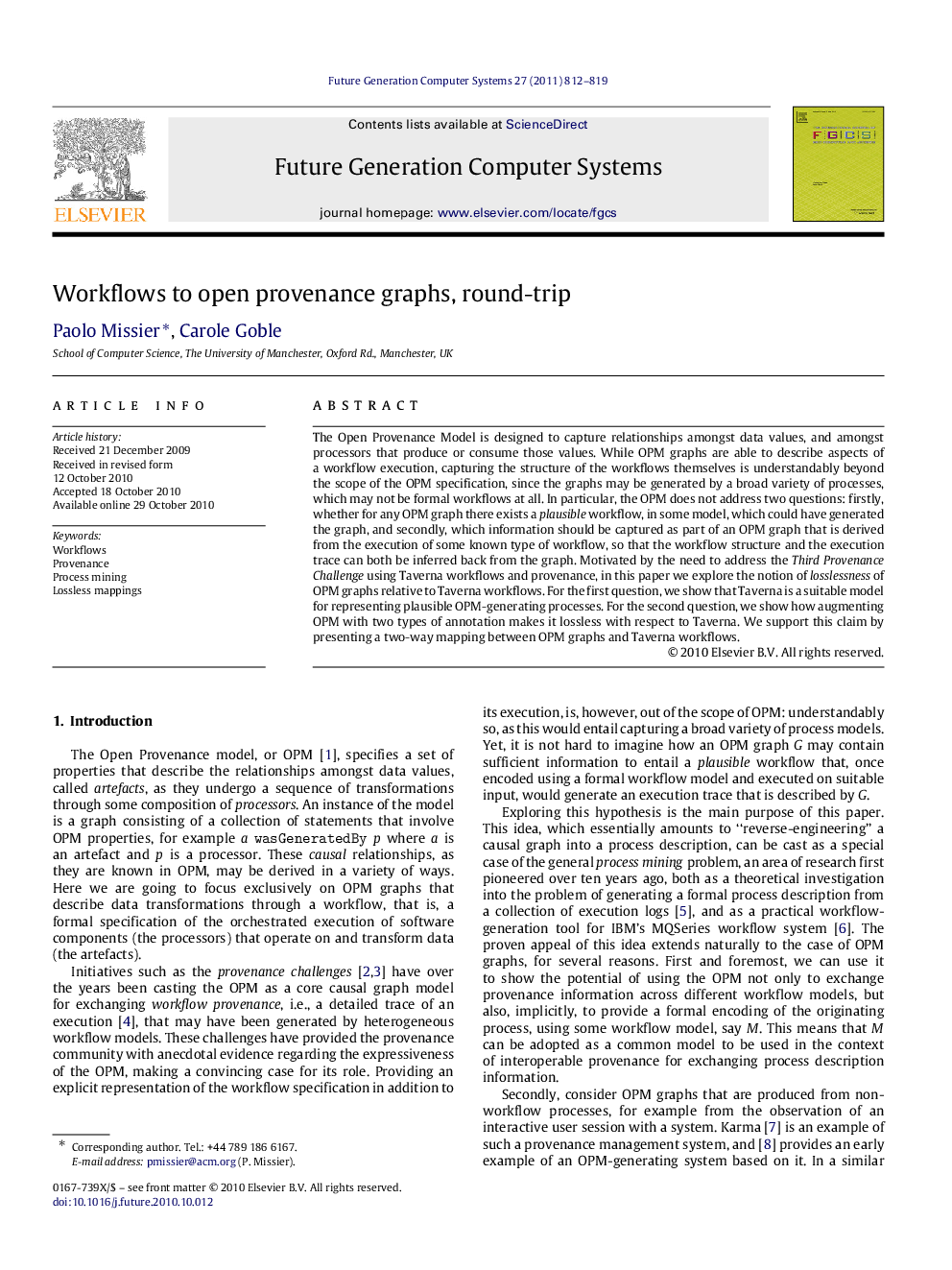| کد مقاله | کد نشریه | سال انتشار | مقاله انگلیسی | نسخه تمام متن |
|---|---|---|---|---|
| 426198 | 686009 | 2011 | 8 صفحه PDF | دانلود رایگان |

The Open Provenance Model is designed to capture relationships amongst data values, and amongst processors that produce or consume those values. While OPM graphs are able to describe aspects of a workflow execution, capturing the structure of the workflows themselves is understandably beyond the scope of the OPM specification, since the graphs may be generated by a broad variety of processes, which may not be formal workflows at all. In particular, the OPM does not address two questions: firstly, whether for any OPM graph there exists a plausible workflow, in some model, which could have generated the graph, and secondly, which information should be captured as part of an OPM graph that is derived from the execution of some known type of workflow, so that the workflow structure and the execution trace can both be inferred back from the graph. Motivated by the need to address the Third Provenance Challenge using Taverna workflows and provenance, in this paper we explore the notion of losslessness of OPM graphs relative to Taverna workflows. For the first question, we show that Taverna is a suitable model for representing plausible OPM-generating processes. For the second question, we show how augmenting OPM with two types of annotation makes it lossless with respect to Taverna. We support this claim by presenting a two-way mapping between OPM graphs and Taverna workflows.
Research highlights
► Round-trip mapping between workflows and OPM provenance traces.
► Annotation requirements for OPM to express typical workflow-generated traces.
► Derivation of plausible workflows from causal data dependencies expressed using OPM
Journal: Future Generation Computer Systems - Volume 27, Issue 6, June 2011, Pages 812–819